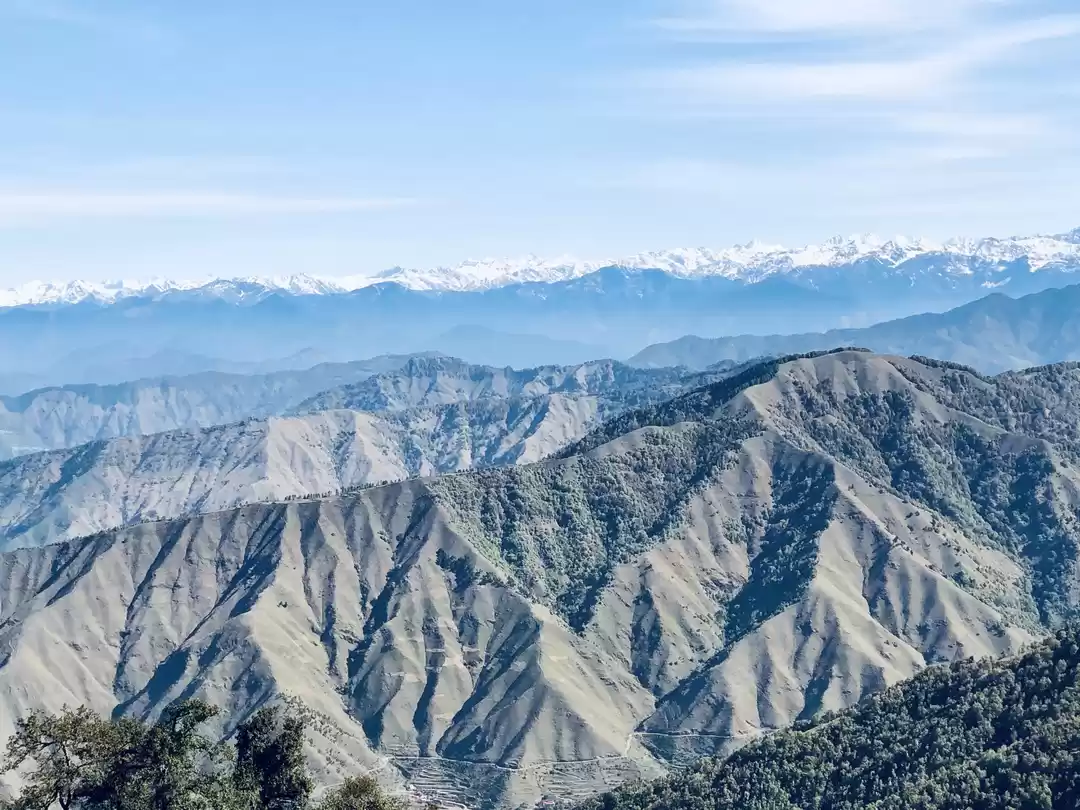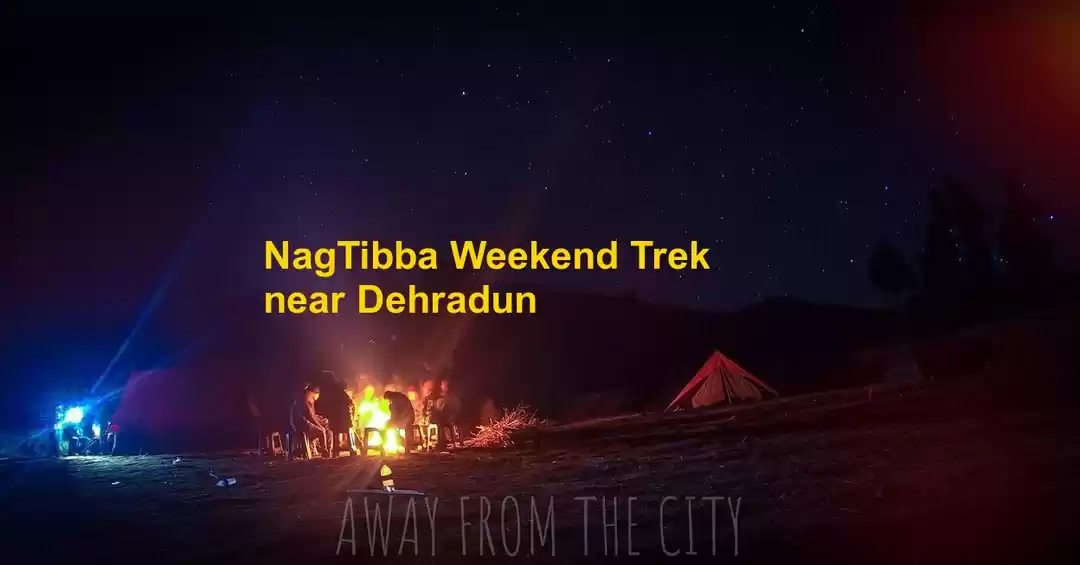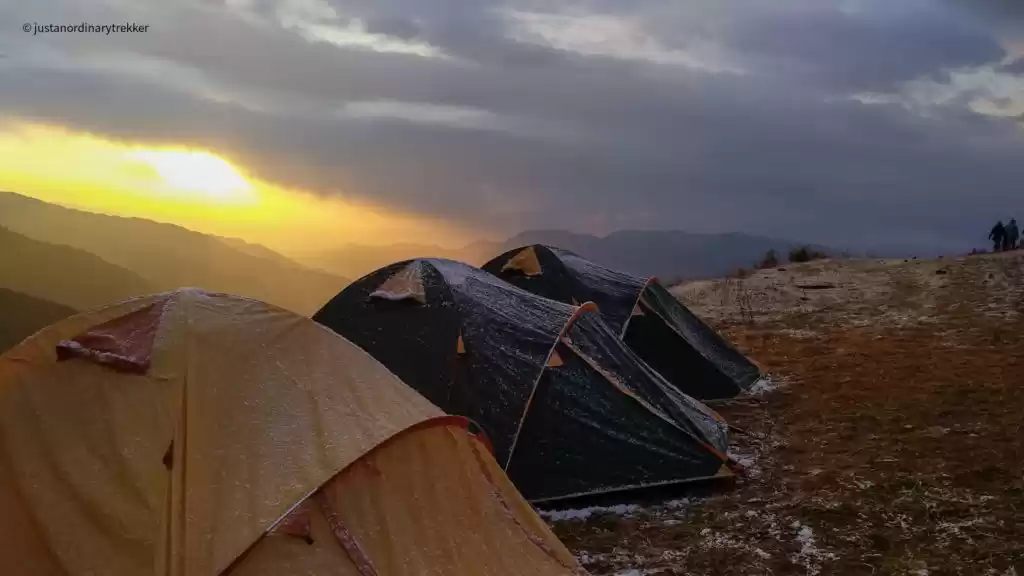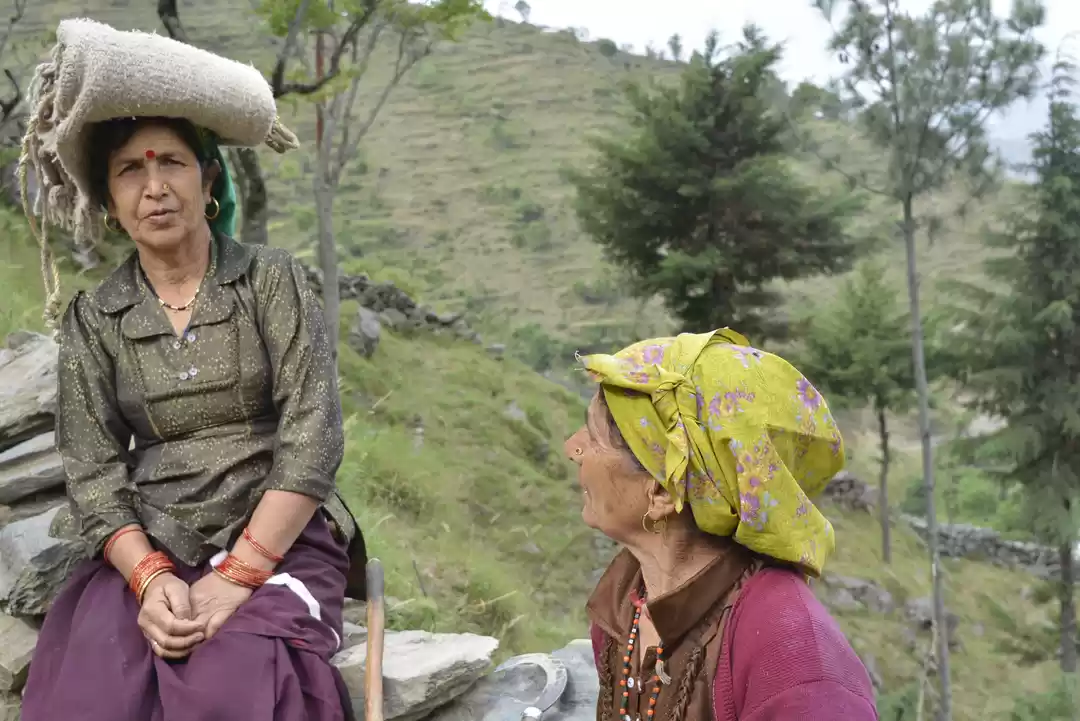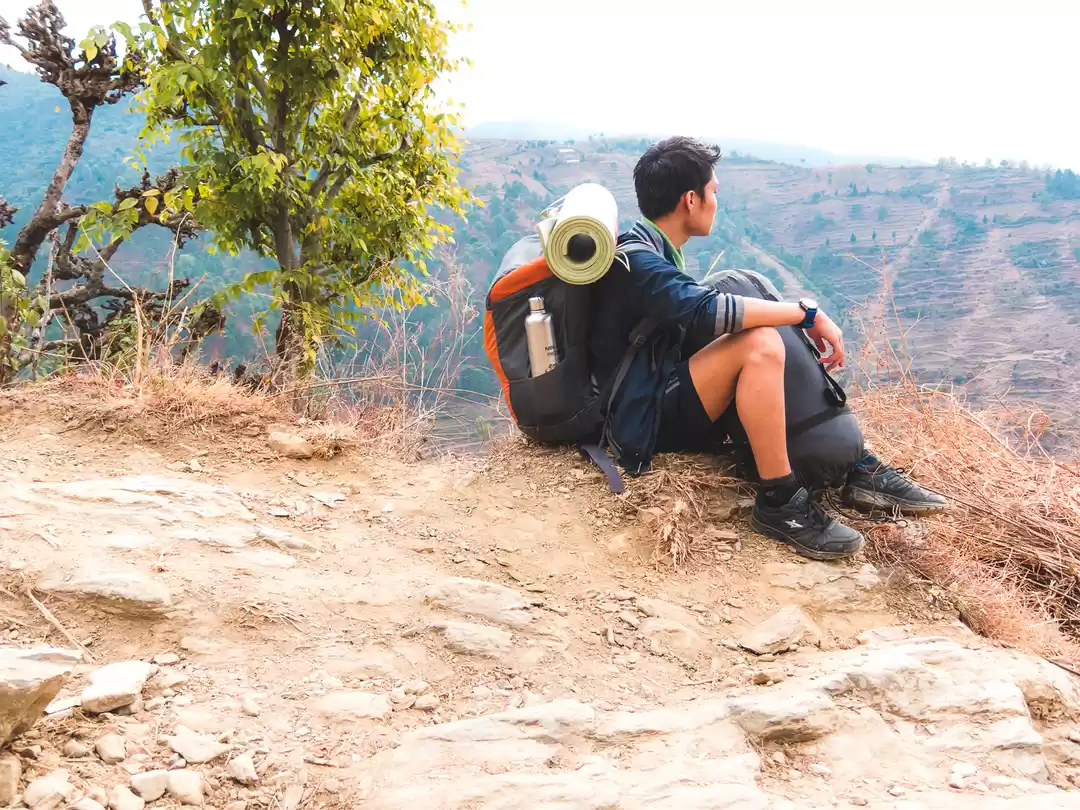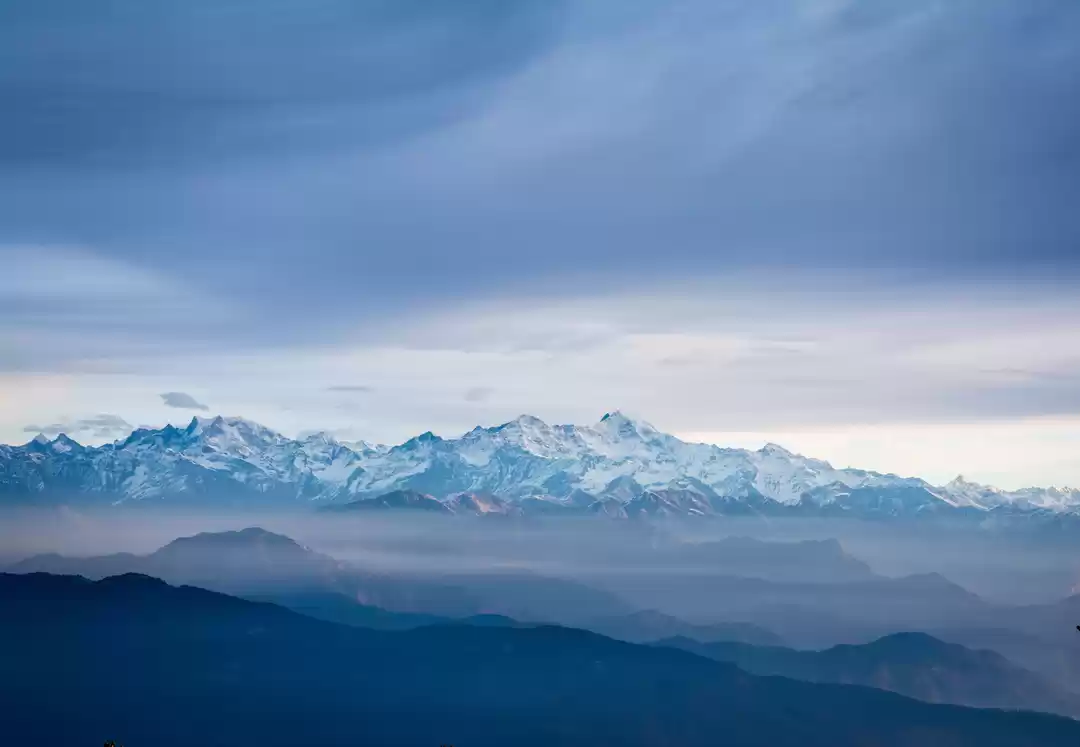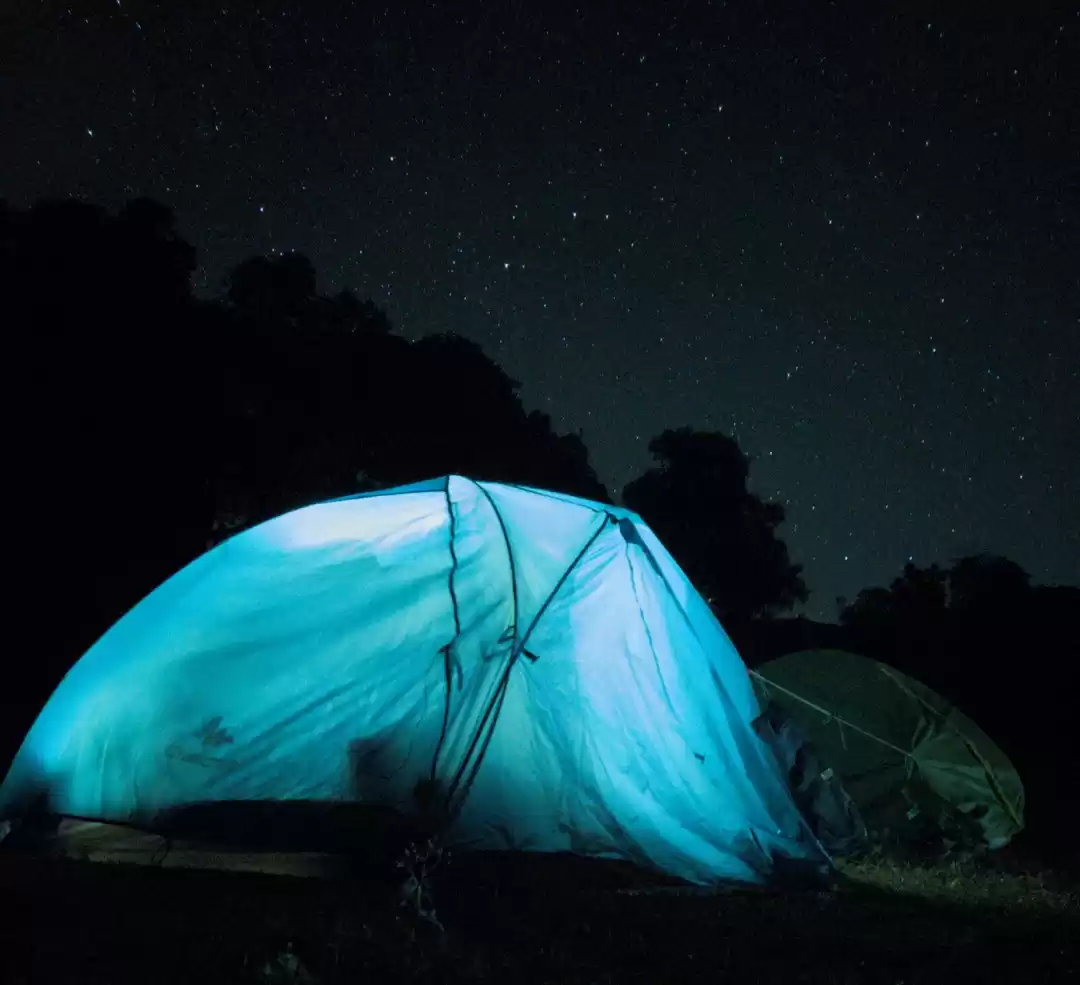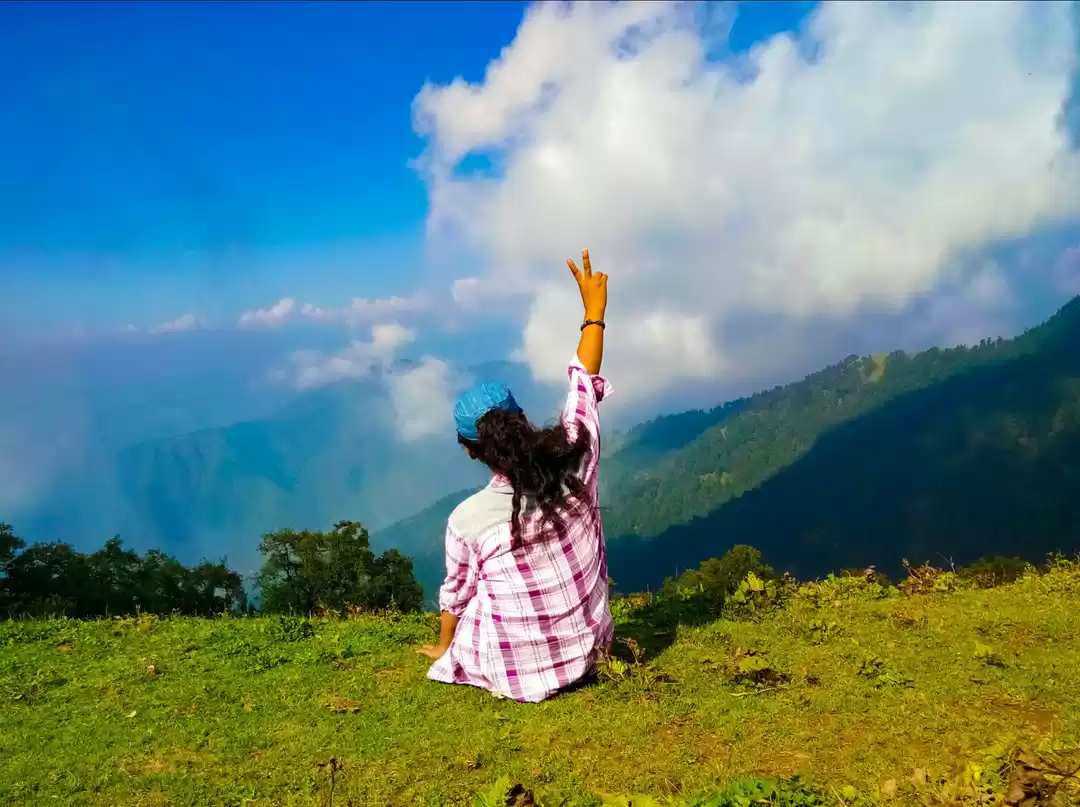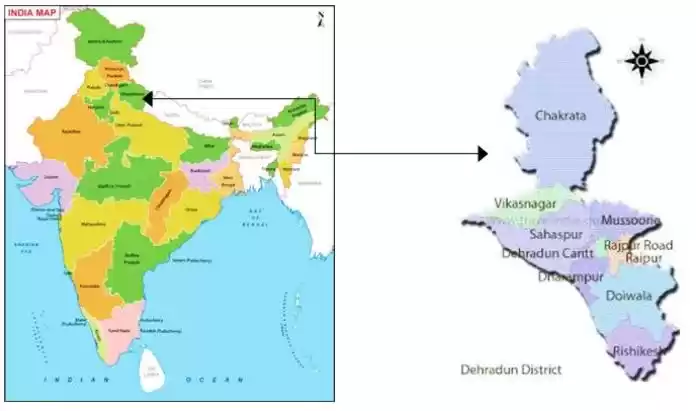
One of the most convenient weekend treks in the Himalayas for those who are time-strapped is the one to Nag Tibba (Serpent Peak). If you leave home on a Fri morning, you can comfortably be back home on Sun evening. Nothing can be better than this when it comes to active weekend options. One can reach the base camp on day 1, do a same day trek up to the Nag Tibba on Day 2, and drive back home on Day 3. It is ideal for solo travelers, amateurs, seasoned walkers and even families or groups of friends.
A journey from Delhi to Dehradoon by train or road, followed by a scenic drive of 3 hours (91 kms) up to PANTWARI would transport one to a picture-perfect getaway that is probably more comparable to the countryside one sees in Europe. Leave your sedan at PANTWARI and switch over to a 4WD sent by the THE GOAT VILLAGE for an uphill narrow drive of 4 kms to LASERGAON. The motorable road ends here. Alternatively, if you are confident of driving yourself in treacherous and steep rocky terrain then you would simply love the route. Park your car at Laser Gaon and start the trek to the NAG TIBBA BASE CAMP. Ensure that you arrive in broad daylight here as the 2 km trek to the base camp is challenging and can easily take up to 2 hours.
If you are not pitching your own tent at the base camp, then stay at the new GOAT VILLAGE, a perfect shelter situated at a stunning meadow offering unparalleled views of mighty mountains and their dense forests all around.
It is an initiative by THE GREEN PEOPLE community that works towards a blend of eco-tourism, agro-tourism and rural-tourism. They are focused on economic development of rural India by offering them education on revival of old traditions of farming and associated practices. They have gone a step further in sourcing and packaging the local produce by the name of BAKRI CHAAP and selling it through select stores in & around Dehradoon. A few of the leading hotels have also tied up with the NGO recently for a regular supply of natural & organic products that come directly from the farmers. During the stay one can pick up nicely packed Chaulayi (Amarnath), Lal bhaat (red rice), Mandua/ Ragi (finger millet), Gahat (horse gram), Makka Flour (corn flour), Himalayan red Chilli powder, Black Bhatt (naturally grown black Soybean), Red Rajma (red kidney beans) etc. to name a few. Most of these stuff is heard of only in grandmother recipes. The food in cities never tastes so good . Every meal is cooked using these ingredients that are hard to find in big towns.
Some of the projects that they drive with a lot of passion and efforts are convincing the locals stay back in their villages by offering them occupations that are gradually becoming redundant; imparting a lot of education to the farmers about reviving the old traditions of farming and associated practices; sourcing the crop from them and bring it directly to the consumer; highlighting the importance of rural & agro-tourism and even informing them how their abandoned farm retreats and home stays can be used not only for the guests but also as collection centers/ retail outlets/ seed banks and paramedic assistance centers. The locals come up here only in summers and during the harvest season and rest of the time in the year they go down to the plains. You will find them working in the fields of corn, mint, barley, maize and other grains.
THE GOAT VILLAGE at Nag Tibba is situated at 7,600 feet on the foothills of the Garhwal Himalayas and offers 8 rooms with basic facilities. Along with 8 cottages that can house 16 guests comfortably, the two condominiums can take another 16 in its dorms. All meals here are organic and served in the common dining room, which also serves as a hangout place to chit chat and share stories and trivia. The guests are supposed to carry their trash back with them and even bring their own towels as laundry is discouraged. Every effort is made and carefully carried out for minimum carbon footprint. Half a bucket of hot water is provided in winters for wash n change and even the wood for bonfires is rationed. The kitchen is overseen by none other than Vinder Panwar, whose claim to fame is his bare-hand fight with a Himalayan Bear not so long ago. https://www.youtube.com/watch?v=ZYsZ5-U9yro.

Others are locals who have benefited from the employment with the village. Then volunteers come to help for a week, month or even a year only for the love of nature, local people, mountains or simply to take an year off from busy mundane life in big cities. They do however ensure you are comfortable in every possible way. Besides the help in the Kitchen that Vinder Panwar gets from some villagers, there are twin pets of Rimjhim & Jhilmil and a kitten, who are considered as important as the guests as they sound the staff of any animal movement around, especially of bears in the fields of corn.
The village is getting popular with experts from various fields coming there to conduct workshops on health, yoga, organic food, nature, birding etc. Besides this one, two more Goat villages have come up in Kaanatal and Raithal (Dayra Bugyal). According to its promoter and my host, Rupesh Rai, there are plans to have such Goat villages in each of the 9 districts of Uttarakhand state.
The NAG TIBBA trek up to the temple (dedicated to Serpent God, the supreme deity of the entire belt) gets you closer to nature with chirping of birds, patches of floating clouds in the sky, fragrance of the thick deodar forests, colorful flowers, mushrooms growing wild, cattle grazing feely, terraced fields and slate- roofed houses showing some traces of civilization. As you walk along the trails of the forest, sights of the peaks of Gangotri, Banderpoonch, Kala naag (Black Peak) and the Swargarohini offer most panoramic views. On reaching the NAG TIBBA temple, there is an option of continuing the walk for another two hours to JHANDI peak, which is considered quite tough and steep. All the effort to walk through thick jungles to this peak is rewarded by the very sight of the mighty BANDAR POONCH PEAK, along with YAMUNOTRI and SHRIKANTHA peak from here. Experts say that it is probably the only mountain top that offers such breathtaking views of the mighty Himalayas. JHANDI (small flags) is marked by an ages old pole of deodar tree adorned with flags tied by the pilgrims and the adventurers.
The trek, besides its lush green trails, is also abode to various resident birds. I was lucky to have spotted quite a handful of them unexpectedly and felt happy that each of them provided me a much needed breather on a picturesque yet demanding trek Incidentally, there are also musk deer, leopards and Himalayan bears etc. which calls for another longer trip soon.
The Nag Tibba temple stands strong on a vast green meadow and it can be seen from quite a distance. According to Hindu mythology, the Pandavas came here during their exile and established its foundation stone. The priest indulged in a lengthy chat and narrated stories of how people from far away came to make a wish and then returned within a year or so, once the wish had been fulfilled. The temple has the magical powers to realize everyone's wishes. The second part of the trek starts from here all the way up to the peak (Nag Tibba) or Jhandi, as it is popularly known. Just 20 meters away is another small temple dedicated to the local goddess Sukanda Devi. I spent some time walking around these two temples, just celebrating my happiness and joy of having reached, where I had no plans to come just a few days ago. It was an accidental plan and hence more enjoyable as they say that best things in life are never planned, they just happen.
Every step on this trek had been an interesting discovery for me. I was able to connect with nature, had my fill of spectacular scenery, recollect many forgotten moments, gain an insight into my life and where it was headed, reconnect with faith that drives the people in this Himalayan region and at the same time thoroughly enjoyed the calmness and an interesting encounter with the lone priest. The return trek on the same track that brought me up here was a bit longer as this time there was no rush to get back. I was trying to absorb every moment, smell every flower, whisper to the mighty trees and enjoy the chirping of colorful birds. The trekking guide from the village spotted a barking deer, though I could only hear it disappear into the woods. The day had been indeed very special.
For the most part of the trek, i only had cattle for company. Despite its popularity, the trek to the temple doesn't see many people. One of the village's twins of RIMJHIM and JHILMIL showed up out of nowhere on the way back. Their playground is as big as a city and them roam around freely and though you may not see them, they never lose the sight of the guests of the village, no matter how far you have trekked.

Having returned to the village early in the evening, I was still restless and wanted more. I was recommended a walk to the village next doors that had only a handful of huts. The people here had come over from the plains to take care of the corn harvesting. The first house I visited had a woman peeling corn and her four children helping her. The same room had three goats, a cow, two sheeps and tons of corn cbos stored. Despite the hard work, the people looked happy. The weather had something to do with it. Their hardship, though imaginable, was not evident on their faces at all. All the children were happy to pose for pictures and continued to chew on the roasted corn.

The village walk is interesting as there are very few people, lots of abandoned houses, beautiful meadows, occasional sighting of shepherds and some locals, who can be seen washing their cattle or carrying the harvest in baskets.


I returned to the Goat Village having spent an hour or so walking around, having met some lovely people who were quite good in offering an insight into their routine life. Still the golden hour had its glow falling upon the stand-alone cottages and i could see the tiled-rooves glitter from the vantage point, where i stood. My earlier decision to give my camera some rest didn't work so well. The sun still had some time to set so i stationed myself from where i could look down at the Goat village and also at the setting sun, which somehow had been enveloped by the clouds. Nevertheless, it made a pretty picture since the dark clouds with silver lining provided a promise, faith and hope.

Finally, i called it a day as the sky had darkened and it was time to group up with the crew for the evening schedule. The dinner I was told was alfresco, which came as a welcome change. Within the village there is a flat area that has been earmarked for special ambiance under the star-spangled sky. I had never seen so many stars anywhere else. One of the staff was quick to name a few of them, while another one could be seen from a distance lighting up the bonfire for us.
On the third and the last day, either trek down for two hours to LASERGAON to pick up your vehicle and drive back home, or simply extend the say and spend time volunteering the farms & the filed. You may even explore the local villages and houses, though there are just a few of them. The effort won't go in vain if you have an interest is birding and photography as there will be plenty of subjects to choose as you walk over green meadows under clear blue skies. The winter month of October is considered to be the best for clear views of the surrounding peaks while the months of Nov to Jan bring their own charm and appeal due to the area's share of snow that it gets, making everything pristine, white and to fall in love with.

With a heavy heart and an unspoken promise of visiting the village again, i picked up my rucksack and said bye to the crew, who had gone out of their way in their line of duty to send back a happy and satisfied guest.
















